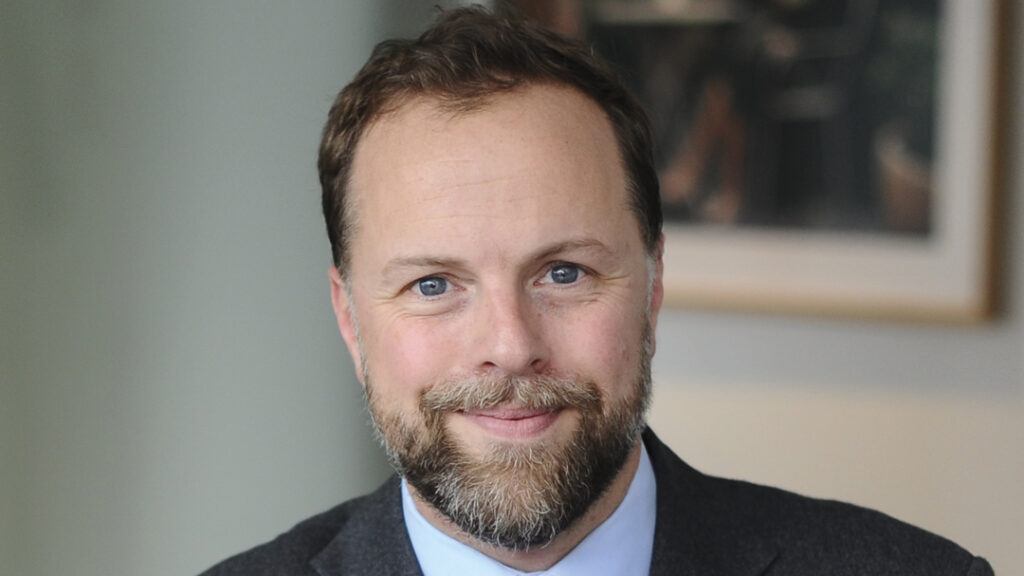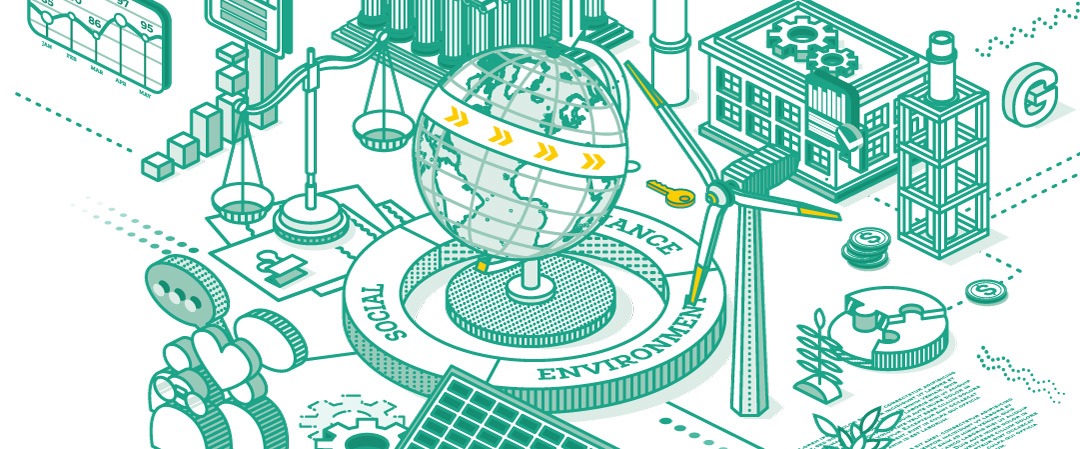ESG imperatives have never been more at the fore for partners, GCs, or indeed any professional with exposure to related reputational risk. A webinar, hosted by The In-House Lawyer and sponsored by Travers Smith brought together partners, experts from in-house, the Bar and a crisis-management guru for a diverse and challenging debate on the ESG-related risks – and rewards – at the top of the agenda.
*****
Nathalie Tidman, The In-House Lawyer: What are the main ESG risks that corporates are facing right now?
Rob Sully, Advanz Pharma (now at Amadeus Advisory): The key risk is how to position our ESG accomplishments and achievements in the absence of any kind of level playing field for positioning those. It’s great that there’s this sudden ramp up of interest in ESG credentials from stakeholders, investors and employees. We’ve seen two risks. Firstly, the initial risk of exaggerating your ESG accomplishments and then creating corporate accountability because you’ve publicised points that people have relied on, whether because of market pressure or simple over optimism. The wider risk and perhaps frustration we’re finding is around the risk of being miscategorised in the multitude of different ESG disclosure regimes that exist, some of which don’t even mention governance, despite it being one of the three letters of ESG.
Nathalie Tidman: From an M&A point of view, what are you seeing in the market?
Samantha Thompson, Anglo American: Increased focus and scrutiny on ESG matters in the business. That has to be built into your M&A strategy. The type of due diligence that you do; you need to be more certain of human rights, the environmental angles, the societal angles of what you’re doing, taking into account a broader range of stakeholders, than one might have otherwise done in an M&A context. The other thing that’s striking is the reputational angle. It’s not just about the numbers and asking: ‘Is this going to make a return on investment?’ It’s actually also: ‘What is the reputational impact going to be?’
One thing that is a real risk is being accused of greenwashing and potentially bluewashing, so overstating your commitment to social responsibility. That is a risk that can come from the best of intentions, as you want to be saying what you’re doing, but actually you run the risk of getting ahead of your skis and overstating what you’re doing. That can have a backlash from the greenwashing angle.
Nathalie Tidman: How is the ESG regulatory landscape playing out for these types of risks?
Doug Bryden, Travers Smith: You’ve got your first bucket of regulations which deals with the underlying subject matter of ESG. These are your traditional regs, rules, commitments on what you can and cannot do at an operational level. They have over the last 30 years done a job: controlled pollution, limited the use of certain chemicals, promoted better health and safety. However, these traditional regulatory levers don’t deal with the realities of our modern global economy, in which a lot of the ESG problems have migrated elsewhere out of the reach of our operational regulatory frameworks and courts.
In response, the EU started to roll-out its ‘new-wave’ regulations, which looked at market access controls, as well as naming and shaming and enhanced corporate transparency. In the beginning these very much focused on chemicals and products which came into the EU – effectively creating at least some extraterritorial effects, not directly but by engaging market access and wider consumers, stakeholders and investor pressures. Over the last few years these mechanisms have moved across into broader ESG disclosure and greenwashing regimes.
The EU is now taking ESG regulation to another level and the UK is following suit. The burgeoning sustainable finance ESG regimes, in particular, are causing real change. Although they have little in the way of regulatory teeth, it’s all about transparency and engaging market pressures. There is also real legal risk with these public statements and I would urge everyone to look very seriously at this, because you will increasingly be held to account regarding those statements.
Nathalie Tidman: What are the main areas where ESG risks have crystallised into a litigation trend?
Heather Gagen, Travers Smith: I would highlight efforts to expand the scope of corporate liability. That looks very different now than it did five or ten years ago. Parent company liability claims are one example of the effort to impose essentially negligence liability on a UK-domiciled company for something that has happened overseas in its operations, often in a very, very different operating environment. Also, value chain litigation. That’s potential liability arising from issues which are not even within your own group – that’s looking at conduct across your commercial value chains.
Adam Heppinstall QC, Henderson Chambers: Some of these claims are because there has been loss and the claimants will say there ought to be compensation, but claims are also often brought to highlight a problem which has occurred abroad and which has fallen between the stools of multinational regulation. In that space we’re seeing activist-type litigation. The UN Guiding Principles aren’t currently front and centre as part of the regulatory arsenal in this country. People are aware that there are specific laws now in France, Germany and Norway. The one route that is available here, and it really is on the rise, is complaints to this little known body, the OECD National Contact Point, which is there if you’ve got a complaint about a multinational company in the UK that you want to allege has breached human rights. Because the OECD guidelines incorporate the UN GPs, it’s a way of alleging that a big multinational corporation has breached human rights. Further, if the NCP process does not give you what you are looking for there is always the possibility of bringing a judicial review against the NCP, not least to attract further publicity to the underlying complaint.
Nathalie Tidman: Are there any new challenges and risks emerging? How are you expecting them to impact your business?
Rob Sully: My worst fear is about greenwashing and where that goes, particularly with a lot of national tenders increasingly taking ESG into account. What do you do if a company is gaming the system when it’s exaggerating its ESG credentials, and it’s winning tenders off the back of that, on the basis of: ‘I’d rather have the business now and defend it later, because who’s actually going to challenge?’ If my business loses to a company like that, how do I challenge that later and show that actually, that ESG point was a determining factor in losing a tender to someone that’s exaggerated? If we’re not careful, this becomes something that could be used quite insidiously and undo the good that ultimately, many of us are trying to build up.
Samantha Thompson: We are obviously in an energy transition. A lot of that is driven by the recognition that the climate change piece of ESG is happening, so how does a business remain relevant, and be sustainable and resilient through a transition, where perhaps the business model actually needs to change to reflect that societal expectations and demand for products are changing? Technology is changing too. It’s part of the bigger strategy, but then that does all play into your M&A strategy as well because, particularly in my sector – mining and metals – any assets that we acquire now, we want to be relevant, not just in two years, but in 20 or 30.

of non-compliance, misstatements, or overestimations.
Nayeem Syed, London Stock
Exchange Group
Nayeem Syed, London Stock Exchange Group: Many firms are now moving very quickly with their ESG plans and as such, transforming very entrenched concepts, business models, structures, as well as whole ecosystems of interdependent relationships. Given that pace, lawyers should help advise their internal clients to not underestimate the amount of analysis required and resulting work that’s involved. If firms don’t allocate sufficient resources, time and thought to think through their plans carefully, there is a greater risk of non-compliance, misstatements, or overestimations.
Nathalie Tidman: What governance decisions are people seeing as being priorities, in terms of managing risks, and also protecting reputations?

Doug Bryden, Travers Smith
Doug Bryden: The level of commitment to managing the risk around statements is certainly increasing (we’re seeing libraries of pre-approved and verified statements), which is very similar to what we see with financial statements. It’s the same level of rigour with lawyers crawling all over it, making sure that there is alignment, there are own-goals. That didn’t happen a few years ago. All the litigation risk is driving that change.
Lawrence Dore, DRD Partnership: We work with a lot of companies helping them on ESG reporting. For all those of you who have worked in-house, you will understand that there is an annual treadmill that you leap on – results, AGMs, annual report. The addition of your sustainability report adds new demands on time and data collection. So new risks emerge – does the expertise exist, what data is available, has it been verified, are the KPIs right and measurable on an on-going basis? In short, it’s more pressure.
Nayeem Syed: In terms of governance, it is important to check if the top-down approach is reaching the bottom. Is it embedding in people’s day jobs? Is there enough risk assessment going into that, if this is moving quickly? Often, it’s about stepping back or zooming in to make sure that the firm’s stated objectives are correctly incorporated into the daily business operations and product activities and policies. That alignment will ensure more scalable progress on this.
Nathalie Tidman: What do you think the big ESG claims will be in five years? Are there particular features of the UK environment which will mean we see a particular type of claim compared to other jurisdictions?
Heather Gagen: Not to sound too much like a doom-mongering litigator, but I don’t think ESG litigation is going to get smaller in five years’ time. A lot of ESG litigation, particularly in the climate change space, but also where businesses have got consumer stakeholder pressure on them, has to be seen through an intergenerational lens; there is really strong pressure, both from very young people and from older people in how they look at this. There’s a very interesting point on climate change litigation about whether the law can really achieve what those activists want or not. You’ve seen the Dutch courts be pretty interventionist and make pretty big orders requiring major energy companies to do particular things. Equally, the New Zealand courts have effectively refused to do that and said: ‘we’re not going to become unelected quasi regulators’. There’s a real debate about how that will play out in this country.
Adam Heppinstall: The thing that we’re waiting for are judgments to come out of the European Court of Human Rights in Strasbourg which state that climate change endangers human rights. Once the dam breaks in this way, then the courts in London might be persuaded to adapt courses of action which allow these cases to proceed, and that may well be how these cases are going to go in the future.
Nathalie Tidman: If the worst does happen, and the crisis moment occurs, what are the implications? What’s the best way to respond effectively to that?
Lawrence Dore: People understand the world is not perfect. What they look to now is how are you going to respond? Standards are very different if you have stuck your head up above the ESG parapet and made yourself a virtue case. The higher you are, the harder to fall. You should spend time before any crisis explaining what your purpose is, what you’re trying to achieve, and critically, explaining why it’s hard, as it is not easy to gain total control of everything that your organisation touches. You should be upfront about the challenges and issues that you face and talk about those before, so that when these issues come, your policies and your approaches are understood.
Doug Bryden: Having the right governance in place is critical. Having a track record to show that you take these things seriously is also important. Make sure you have a team which can mobilise quickly if issues arise. This should include lawyers as well as comms and media. Steps taken in the first 48 hours after an ESG crisis often sets the drumbeat of the next two years of investigations, claims and settlement.
Nathalie Tidman: Any closing remarks to end on a positive?
Nayeem Syed: All of this is not easy and it is important to acknowledge that we’re seeing so much helpful transformation. We should be grateful there is so much commitment to potentially reverse course or forgo existing revenue streams and invest to move to things that are uncertain. There is still a big job to do in terms of risk management clearly, but overall, it’s incredibly positive.


